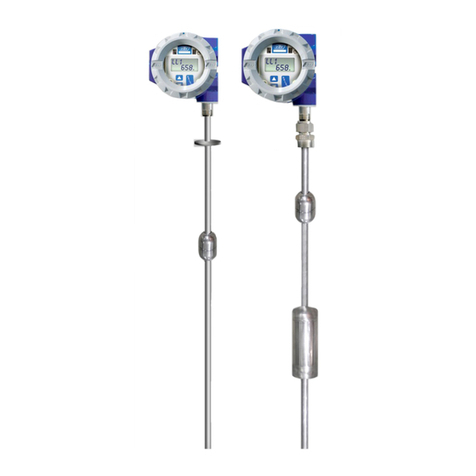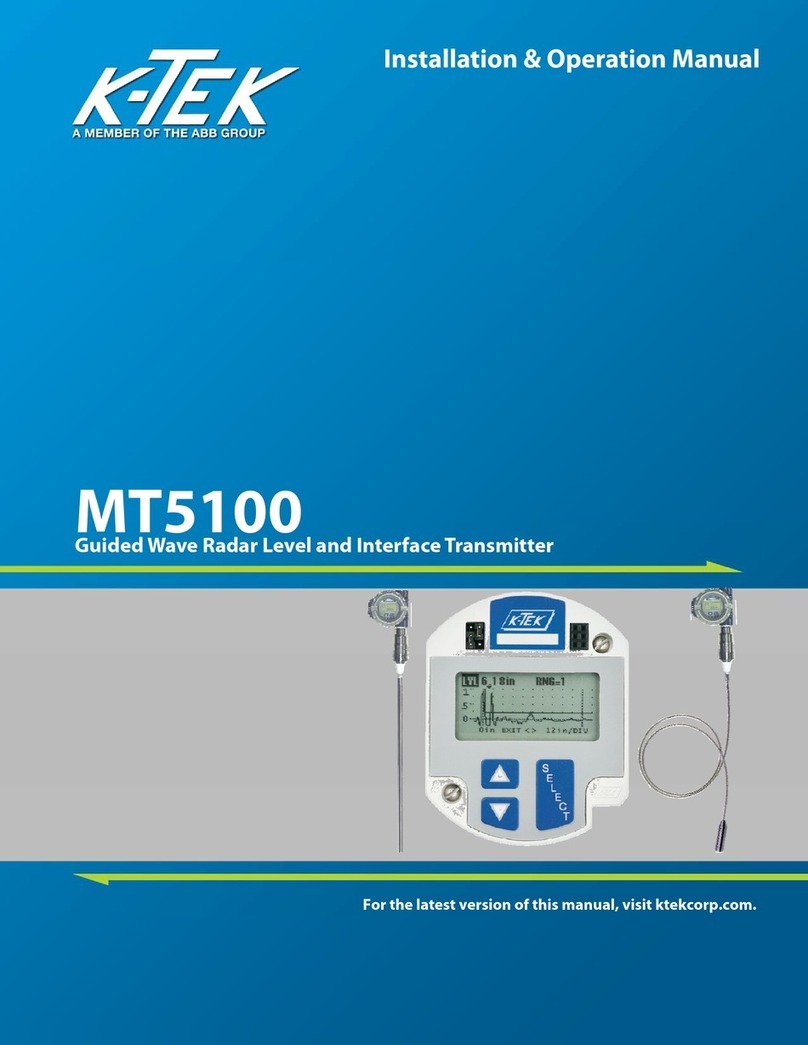
MT5000-0200-1 Rev f (10-2010) DCN0528 2
TABLE OF CONTENTS
1.0 Introduction................................................................................................................................ 3
2.0 Overview.................................................................................................................................... 4
2.1 Storage and Handling Information ..................................................................................... 4
2.2 Ambient Temperature ........................................................................................................ 4
2.3 Description and Principle of Operation .............................................................................. 4
3.0 Installation.................................................................................................................................. 6
3.1 Mechanical Installation ....................................................................................................... 6
3.2 Shortening of the Probe ..................................................................................................... 7
3.3 Electrical Installation .......................................................................................................... 7
4.0 Commissioning .......................................................................................................................... 8
4.1 Display Operation............................................................................................................... 8
4.1.1. Jumper Settings .................................................................................................... 9
4.1.2. Push Buttons ......................................................................................................... 9
4.2 MT5000 Menu Flow Chart.................................................................................................. 10
4.3 Basic Setup ........................................................................................................................ 11
4.3.1. Units ....................................................................................................................... 11
4.3.2. Probe Type............................................................................................................. 11
4.3.3. Probe Length.......................................................................................................... 12
4.3.4. Mounting Type ....................................................................................................... 13
4.3.5. Nozzle Length ........................................................................................................ 14
4.3.6. Offset...................................................................................................................... 14
4.3.7. Dielectric................................................................................................................. 16
4.3.8. Measure Mode ....................................................................................................... 16
4.3.9. Language ............................................................................................................... 17
4.4 Quick Calibration ................................................................................................................ 18
4.5 mA Output Setup................................................................................................................ 18
4.5.1. Output..................................................................................................................... 19
4.5.2. LRV 4mA ................................................................................................................ 19
4.5.3. URV 20mA ............................................................................................................. 19
4.5.4. Dampening ............................................................................................................. 20
4.5.5. Alarm Delay............................................................................................................ 20
4.5.6. DAC Trim (4mA and 20mA) ................................................................................... 21
4.5.7. LOOP Test ............................................................................................................. 21
4.5.8. HART Address ....................................................................................................... 22
4.5.9. LRS (HART version only)...................................................................................... 22
4.6 Extended Setup.................................................................................................................. 23
4.6.1. Waveform Display .................................................................................................. 23
4.6.2. Functions................................................................................................................ 25
4.6.3. Temperature........................................................................................................... 26
4.6.4. Linearization Menu................................................................................................. 27
4.6.5. SOR (HART version only)...................................................................................... 31
5.0 Troubleshooting......................................................................................................................... 32
5.1 Valid Current Loop Outputs................................................................................................ 32
5.2 Symptoms and Solutions ................................................................................................... 32
5.3 Electronics Module Replacement ...................................................................................... 33
6.0 Installation Drawings for Intrinsic Safety & Standard Wiring..................................................... 34
7.0 Installation Drawings for Explosion Proof.................................................................................. 36
8.0 CE Certificate of Conformity...................................................................................................... 37
9.0 Customer Support ..................................................................................................................... 38
9.1 K-TEK RMA Form .............................................................................................................. 39
10.0 Warranty .................................................................................................................................. 40





























